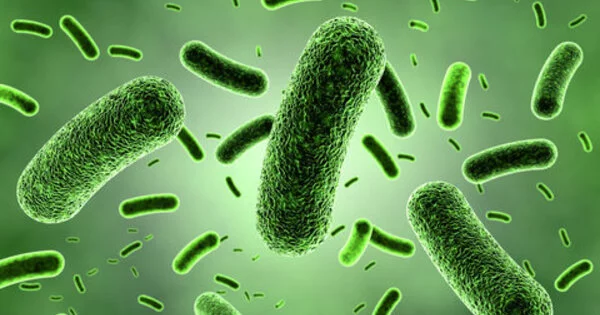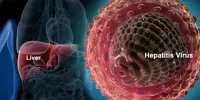According to a new study, scientists uncovered a novel marine virus that dwells at an incredible depth of 8,900 meters (approximately 5.5 miles) below the ocean surface, making it the deepest known isolated phage ever detected in the world waters. The unusual discovery may offer light on the microbial organisms that lie in the deepest parts of the ocean, known as the “hadal” zone and play vital roles in the global climate and carbon cycle.
The virus was discovered in sediments recovered from the Mariana Trench, a massive formation in the Pacific Ocean that contains the world’s deepest abysses. It is a member of the Suviridae family of so-called “siphoviruses,” which only infect bacteria and cannot infect humans.
Bacteriophages are viruses that survive and multiply in bacterial hosts and are found in every ecosystem on Earth, including the Mariana Trench. Bacteriophages have already been detected at depths of up to 8,636 meters in the trench, though the nature of these viruses is still unknown.

Scientists led by Min Wang of the Ocean University of China in Qingdao have discovered a new bacteriophage in trench samples collected at a depth of 8,900 meters, which is nearly 260 meters (800 feet) deeper than the previous record-holder. According to a study published on Wednesday in Microbiology Spectrum, the phage, identified as vB_HmeY_H4907, is “the deepest known phage isolated to date” and “represents a novel abundant viral family in the ocean.”
“We are marine virologists, and our research team’s primary focus lies in investigating the community structure, diversity, distribution patterns, regulatory mechanisms, and ecological roles of viruses and their hosts in various marine habitats, such as polar regions and the deep sea,” Wang and two of her co-authors, Yue Su and Yantao Liang, explained in an email to Motherboard.
“Our collaborator Yu-Zhong Zhang’s team isolated host bacteria from the Mariana Trench sediments,” the researchers stated. “Their team has been investigating microbial life in various extreme environments, including the Mariana Trench, whereas we are primarily interested in viruses.” Given the unusual structure of the trench, the chances of isolating viruses using traditional infection procedures are slim. So we decided to employ the induction method”—a type of phage detection method—”to identify phages by referring to past investigations.”
The scientists found a new phage that infects a bacterial species in the Halomonas family of bacteria that has adapted to a variety of deep-ha habitats ranging from the Antarctic seafloor to deep-sea hydrothermal vents.
The bacteria are “widely used in synthetic biology because members of Halomonas are well known for their capacity to break down petroleum hydrocarbons, flourish in environments with high salt concentrations and alkaline pH, and have a high tolerance to contamination,” according to the researchers. “It is also abundant in the Mariana Trench, implying that it may be important in hadal environments.”
Despite its importance, little is known about the viruses that infect Halomonas, with only two phages having been published in the National Center for Biotechnology Information (NCBI) dataset so far.”
The identification of vB_HmeY_H4907 brings the team’s total to three. The phage’s genomic study revealed that it has a “lysogenic” life strategy in which it inserts its own genome into the host genome, infecting it from within the cell. According to the study, the team was able to discern the phage’s “icosahedron head” with an average diameter of 65 nanometers and its “long, non-contractible tail” with a diameter of 183 nanometers using a transmission electron microscope. A sheet of paper is approximately 100,000 nanometers thick.
“Genomic analysis revealed that vB_HmeY_H4907 was evolutionarily distant from other reference viruses and abundantly distributed in the ocean, demonstrating the lysogenic life strategy of hadal phages and the importance of isolating prophages from their hosts,” the researchers explained to Motherboard. “Moreover, the temperate phage vB_HmeY_H4907 is highly homologous to its host, providing a theoretical foundation for an in-depth analysis of virus survival strategies in extremely harsh environments and their co-evolution with their hosts.”
The discovery provides a unique glimpse into the hitherto unknown microbial world that dominates the hadal bottom. The bacteria and viruses that inhabit these extraterrestrial places may be microscopic, but their cumulative impact on our planet is significant. Indeed, deep sea viruses are identified in the paper as “essential regulators of global ecology” since they control the movement of carbons through the seas, which has an impact on climate change, making it critical to understand their evolution and life cycles. While the discovery of a virus from the deep sea may appear frightening at first, these germs are more likely to enhance human health than to damage it.
“The host of this bacteriophage is a bacterium, which is a type of prokaryotic organism,” explained Su, Wang, and Liang. “At the moment, bacteriophage isolation and bacteriophage gene library enrichment are more beneficial to human health.” They help protect humans from bacterial infections, which is especially important in this day and age of antibiotic use and the spread of antibiotic-resistant bacteria. At the same time, current research reveals that “bacteriophages infecting eukaryotic organisms”—a group that includes humans.
The researchers intend to continue researching the microbial residents of these strange habitats with modern technologies in order to better comprehend them.
“Metagenomic studies in the Marianas Trench have shown that viruses in the hadal may prefer a lysogenic viral approach to adapt to the hadal environment, and our study also showed that the temperate phage vB_HmeY_H4907 has a higher abundance in the hadal, which may validate the speculation of a higher abundance of temperate phages in the hadal environment,” the researchers wrote in an email.
“In the future, we will isolate more phages from the abyss to test this hypothesis and explore the co-evolutionary relationship between temperate virus and host,” the researchers concluded. “Following that, we intend to investigate the molecular mechanisms underlying the interaction of hadal trench viruses and their hosts.” For example, studying the effect on a host’s physiological and biochemical processes after removing certain viral regions from its genome.”
















